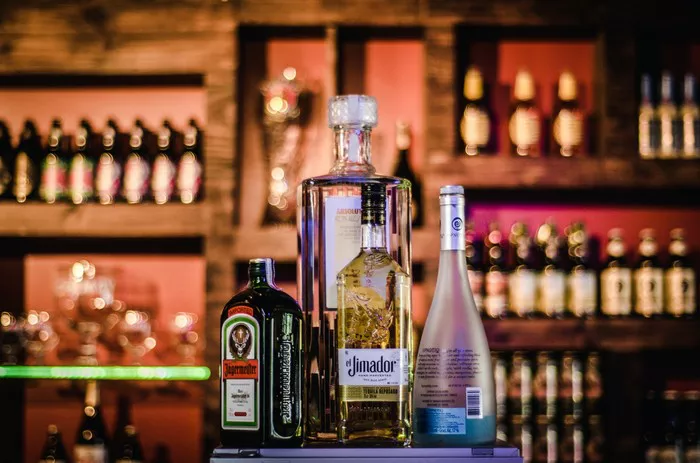Gin, known for its botanical infusion and distinct juniper flavor, is a beloved spirit with a rich history and a place of honor in the world of cocktails. It has evolved from its humble origins as a herbal medicine to become a celebrated and diverse category of spirits. In this comprehensive guide, we’ll explore the intricate process of gin-making, from selecting botanicals to the final distillation, and uncover the artistry behind creating this iconic beverage.
The Origins and Evolution of Gin
Gin’s story begins with its roots as a medicinal tonic. In the 17th century, a Dutch physician named Franciscus Sylvius is often credited with creating an early form of gin, which he intended to treat various ailments. His concoction, known as “genever” or “genever,” was made by distilling malt wine with juniper and other botanicals.
The English were introduced to genever during the Anglo-Dutch Wars, and they began producing their own versions, which evolved into the gin we know today. Over time, gin’s reputation shifted from a health remedy to a popular and versatile spirit used in cocktails and enjoyed in various forms.
Botanicals and Flavor Profile
Gin is defined by its predominant flavor of juniper berries, but it is the combination of botanicals that gives each gin its unique character. Botanicals are the herbs, spices, fruits, and other natural ingredients added during the distillation process. These botanicals contribute to the complexity and depth of flavor in gin.
While juniper is the cornerstone botanical, other commonly used botanicals include coriander, angelica root, citrus peel, and orris root. Additional botanicals like cardamom, cinnamon, and licorice may be used to impart specific flavor notes and aromatic qualities.
The precise selection and proportions of botanicals are closely guarded secrets by gin distillers, and they play a crucial role in defining a gin’s flavor profile. Distillers experiment with different combinations to create a distinctive and well-balanced taste.
The Gin-Making Process
The production of gin involves several stages, including mashing, fermentation, distillation, and sometimes aging. Here’s a detailed look at the gin-making process:
Mashing: The process begins with the selection of the base spirit, which is typically a neutral spirit like grain alcohol. The base spirit is mixed with water and heated to create a mash.
Fermentation: Yeast is added to the mash to ferment the sugars, which converts them into alcohol. The resulting liquid, known as “wash,” is relatively low in alcohol content.
Distillation: The wash is then distilled to increase the alcohol content and separate alcohol from impurities. This process takes place in a still, which may be a pot still or a column still. The wash is heated, and the alcohol vapors are collected, condensed, and collected as high-proof alcohol.
Botanical Infusion: The distilled alcohol, known as “neutral spirit,” is then infused with a carefully selected combination of botanicals. These botanicals are placed in the still or added to the spirit before redistillation.
Redistillation: The botanical-infused spirit is distilled again, often in a pot still. This second distillation allows the alcohol to take on the flavors and aromas of the botanicals, resulting in a gin with its distinct taste.
Dilution: After distillation, the high-proof gin may be diluted with water to reach the desired alcohol content, typically around 40-50% ABV (alcohol by volume).
Filtration: Some gins undergo filtration to remove any remaining impurities and ensure a clear and polished appearance.
Bottling: The finished gin is bottled and labeled, ready for distribution and consumption.
Types of Gin
Gin is a versatile spirit that comes in various types, each with its unique characteristics. The main types of gin include:
London Dry Gin: Known for its dry and balanced flavor profile, London Dry Gin does not have to be made in London, but it must adhere to strict production standards. It often features juniper, citrus, and coriander as primary botanicals.
Plymouth Gin: Produced in Plymouth, England, Plymouth Gin is slightly sweeter and softer than London Dry Gin. It is defined by its unique geographical designation and has a distinct, fruity aroma.
Old Tom Gin: A sweeter and slightly maltier style of gin, Old Tom Gin was popular in the 18th century. It’s often used in classic cocktails like the Tom Collins and Martinez.
Genever (Jenever): Genever is the original Dutch gin, known for its malted grain base and rich, malty flavor. It can be aged in oak casks, resulting in a more complex taste.
New Western or Contemporary Gin: This category includes modern gins that deviate from the traditional juniper-forward flavor profile. They often feature a broader range of botanicals, emphasizing other flavors, such as citrus, herbs, or spices.
Gin and Tonic: A Timeless Classic
The Gin and Tonic is one of the most iconic gin cocktails, celebrated for its simplicity and refreshing qualities. To create this classic libation, combine gin with tonic water and a garnish of lime or lemon. The effervescence of the tonic water complements the botanicals of the gin, resulting in a crisp and revitalizing beverage.
Gin has also become a key ingredient in numerous classic and contemporary cocktails, including the Negroni, Martini, Tom Collins, and Aviation, showcasing its versatility in mixology.
Conclusion
Gin, a spirit rooted in history and tradition, has evolved into a diverse and vibrant category of distilled beverages. The selection of botanicals and the distillation process are at the heart of gin-making, allowing each brand to craft its unique flavor profile. From London Dry Gin to contemporary craft gins, there is a gin to suit every palate and preference.


